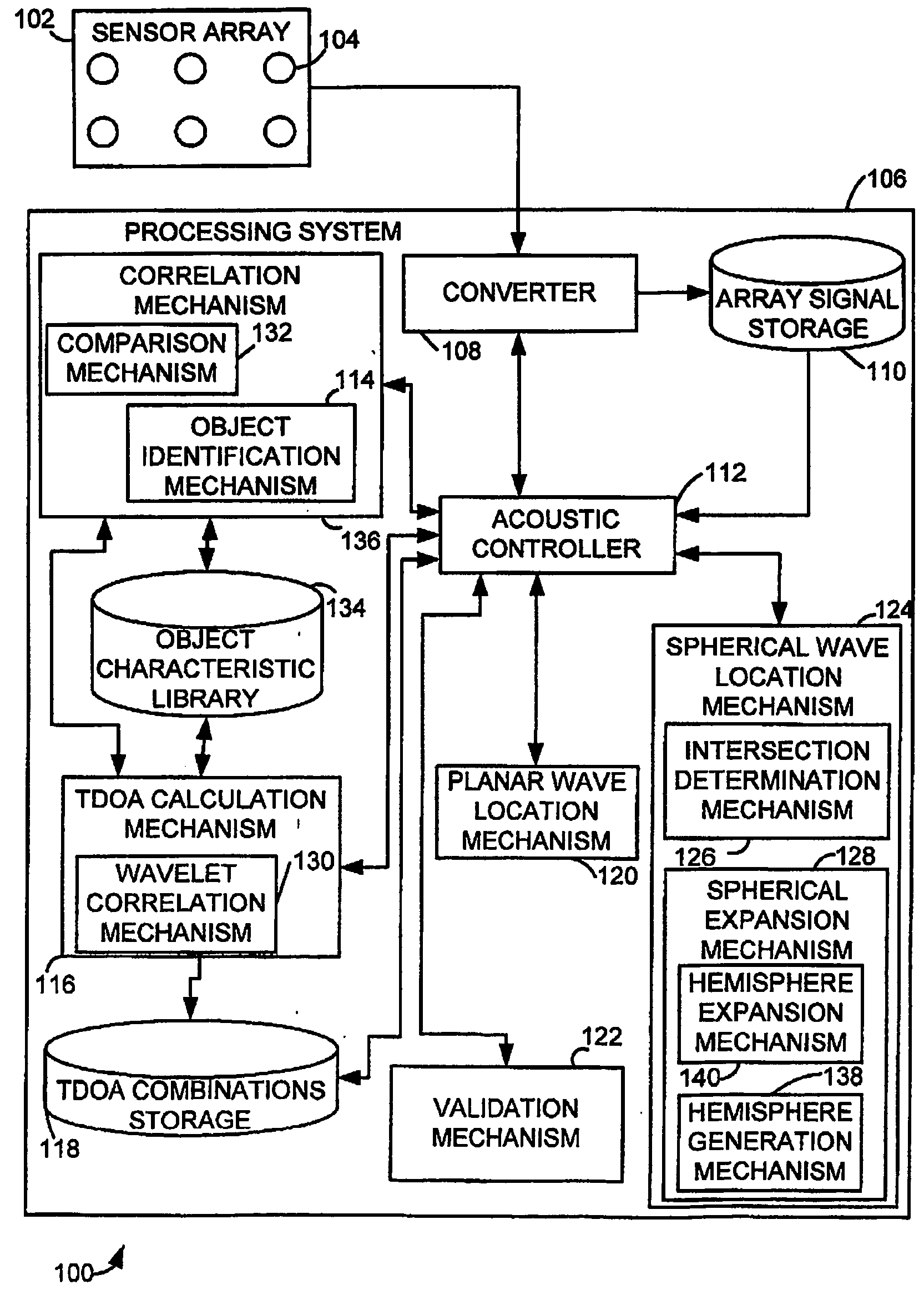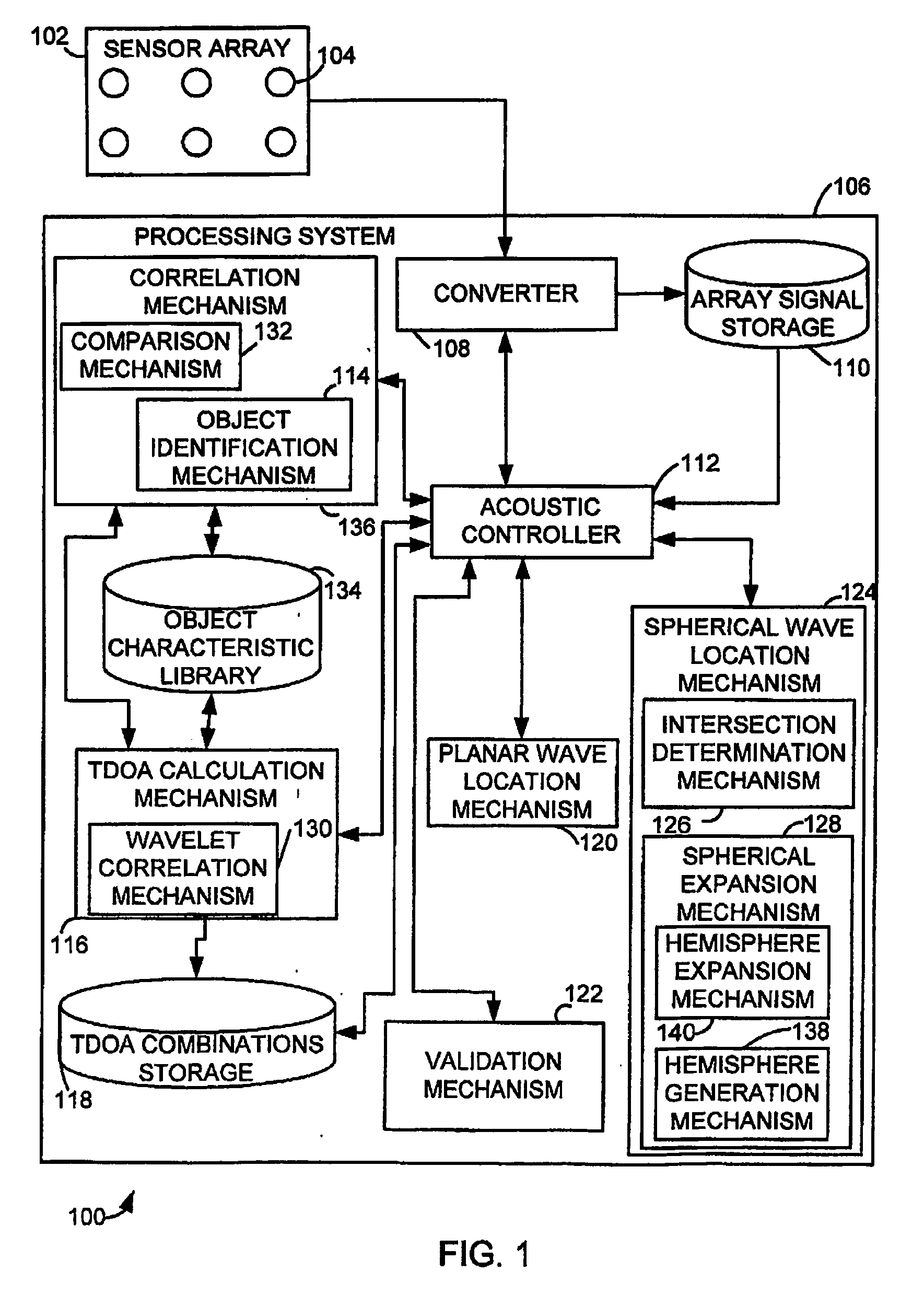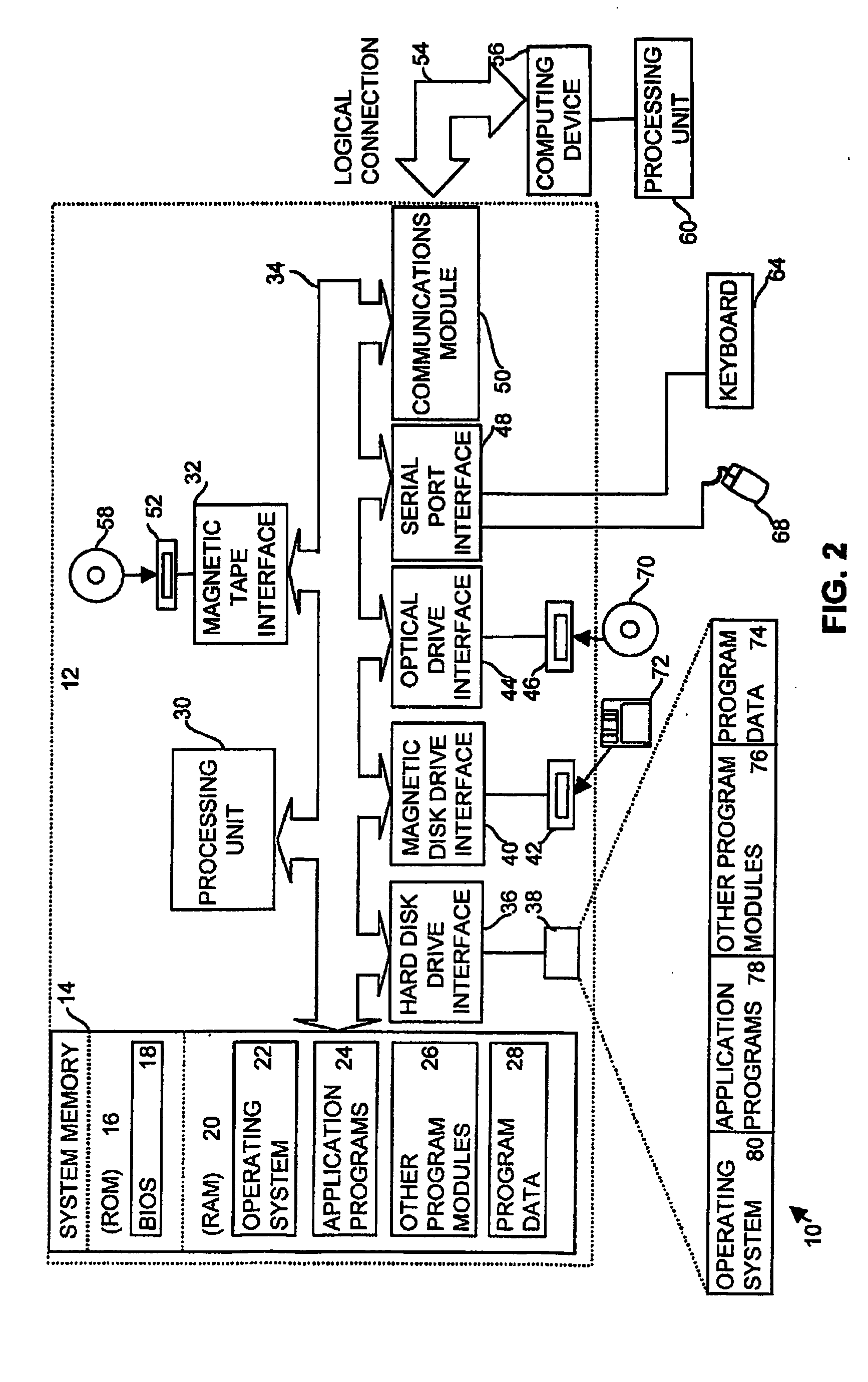Identification and location of an object via passive acoustic detection
a passive acoustic detection and object technology, applied in the field of identifying and locating soundemitting objects using acoustic detection, can solve the problems of inaccuracy, restricted locating of soundemitting objects, and high number of repeated measurements, and achieve the effect of increasing the siz
- Summary
- Abstract
- Description
- Claims
- Application Information
AI Technical Summary
Problems solved by technology
Method used
Image
Examples
Embodiment Construction
[0016]FIG. 1 shows an acoustic location system 100 for identifying and locating moving and stationary objects via sound emitted from these objects. The acoustic location system 100 passively monitors a source of acoustic waves, the moving or stationary object, and derives location and identification information for the object from acoustic waves that are received at the acoustic location system 100. The acoustic location system 100 may be configured to identify and locate one or more specific type(s) of target object(s) or all received acoustic waves may be processed to determine the type of object from which the acoustic waves originated and the location of the object.
[0017] The acoustic location system 100 is composed of two primary components: a sensor array 102 and a processing system 106. The sensor array 102 includes a plurality of individual acoustic sensors 104 that passively monitor for acoustic waves. Acoustic waves detected by the sensors 104 of the sensor array 102 are ...
PUM
 Login to View More
Login to View More Abstract
Description
Claims
Application Information
 Login to View More
Login to View More - R&D
- Intellectual Property
- Life Sciences
- Materials
- Tech Scout
- Unparalleled Data Quality
- Higher Quality Content
- 60% Fewer Hallucinations
Browse by: Latest US Patents, China's latest patents, Technical Efficacy Thesaurus, Application Domain, Technology Topic, Popular Technical Reports.
© 2025 PatSnap. All rights reserved.Legal|Privacy policy|Modern Slavery Act Transparency Statement|Sitemap|About US| Contact US: help@patsnap.com



